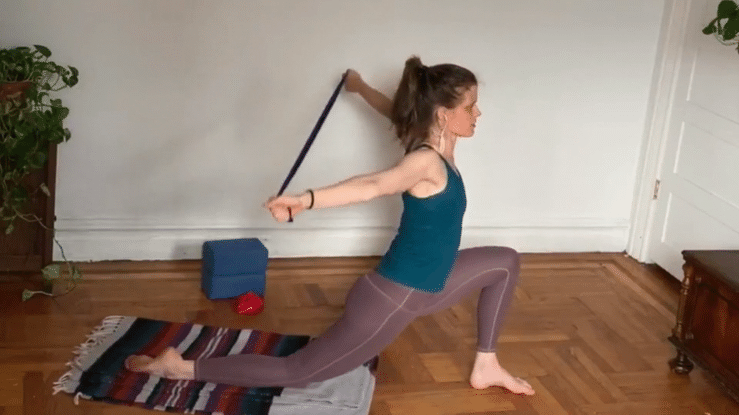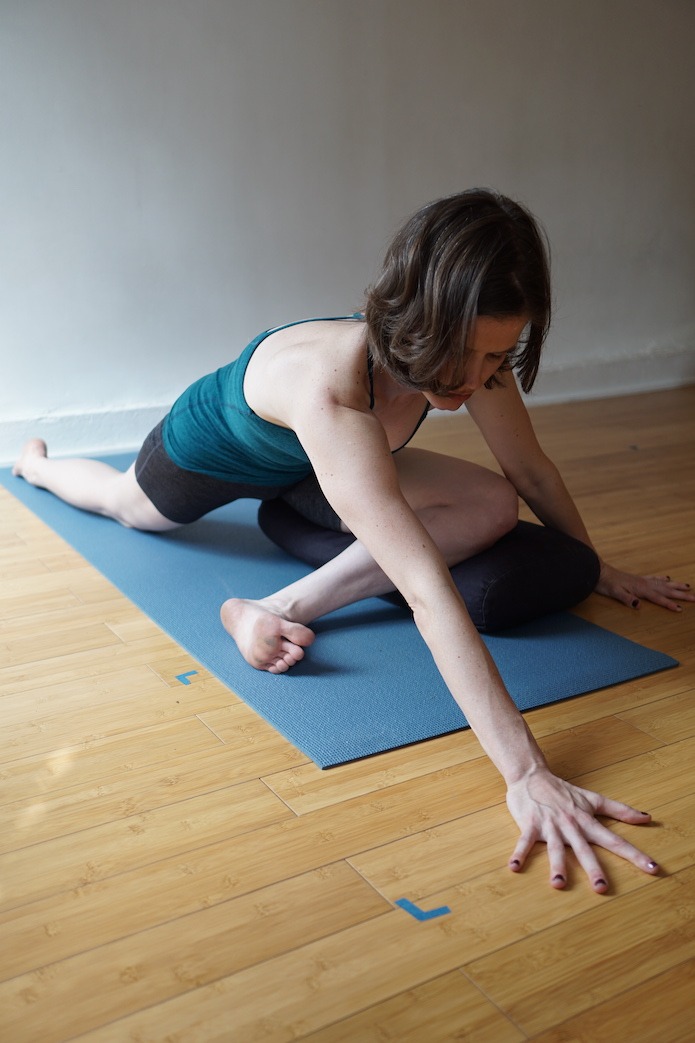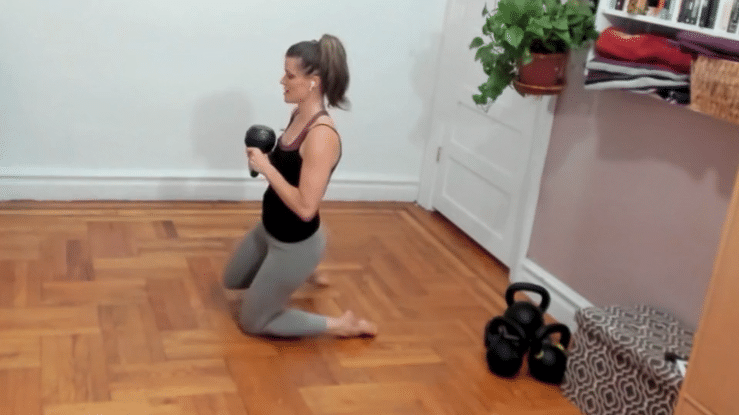For every time I get a question about shoulder pain in chaturanga, I get two for what students describe as “tight hips.” “How can I stretch my hip flexors?” they ask, pointing to the front of their pelvis.

In essence, they are asking for a recommended hip opener. But, what are hip openers?
Most of the time, when people think of the hip-opening asanas, they tend to think of asanas that don’t stretch the front of their hips, like the image above does, but rather asanas that involve a position of external rotation and flexion of the hips. Also, they don’t imagine active/dynamic stretching like the example above, but more passive, static stretches. You know them as well as I do—postures like baddha konasana, thread the needle/figure four, or pigeon (single or double, take your pick!) that have been given all sorts of magical powers in yogaland.

The truth is, any pose or movement that asks your hips to move beyond what is your “normal” range of motion, has the potential to feel like a stretch and could constitute a “hip opener.”
Meaning, it might cause you to feel your hip tightness. And, if you do the stretch enough, it can lead to you having a larger “normal” range of motion.
Side note: an interesting feature of pigeon pose, pictured above, in terms of its joint positions is that it is a pose that stretches both the lateral hip compartment (of the front hip), but also the hip flexor muscles (of the back hip.) These are both areas students often report feeling “tight” but when we think of hip openers, we’re often thinking of poses that explore positions like that of the front hip in pigeon.
I myself spent a ton of time in pigeon pose when my own hips felt “tight.” I also had the idea that by opening my hips I’d somehow be happier, unplagued by stressful emotions, and a better person. Having tight hips meant something was wrong with me, and gosh darn it I was going to fix that.
Spoiler alert: pigeon pose didn’t help me feel happier or less plagued by stressful emotions. It didn’t make me a better person. In fact, as the years went on, the more I did pigeon, the less of any of those things I felt. In fact, I felt more stress and more pain.
Around 6 years into my yoga teaching career, I also started to hear from a lot of senior yoga teachers coming out about hip pain that they’d kept secret for years. Many ultimately required hip replacements. I laid in bed at night wondering when I’d have to schedule my surgery, since I was convinced that I had the same problem they did.
After that freak-out, I went through a phase where I demonized all passive stretching and stopped practicing and teaching it. I believed that passive stretching overstretched ligaments and caused my joints, like my SI joints, to dislocate or slip out of place.
However, after learning more about pain, as well as the difference between flexibility (total joint range of motion) versus mobility (the joint range of motion our nervous system can actively control) I settled on what I think is a more nuanced understanding of the role passive stretching played in my hip pain.
You see, the perception of tightness I had might have been a message from my nervous system, not the outcome of too much irresponsible passive stretching.
Ligaments and joints, like the SI joint, are incredibly tough, and they get tougher through tensile load (stretching them!) so it doesn’t make sense that a relatively low tensile load, like a passive stretch, would be enough to overwhelm them.
In actuality, the tight feeling I experienced was a way of limiting my range of motion in a stretch, in essence saying, “Hey there, not so fast, you’re not going to move that way. It’s not safe.” Sensing a lack of control in my joints (mobility, which involves being strong in end range positions), my body was tensing up.
The way to calm it down wasn’t to passively stretch more. It wasn’t to plop down in pigeon and hope for the best.
I had to improve my hip joint strength and control to enforce a feeling of safety in my joints that would allow the joints to expand their range of motion—i.e., “open” them. Hence I began my journey of exploring loaded movements—the kind with weights and bands and other fun things that expanded the vocabulary of how my hips (and my whole body) could feel beyond “tight” and “open.”

Now, when a student asks me for help with “tight hips” and wants some passive stretches, I don’t automatically start ringing alarm bells and tell them to “abort!” like I once did. Instead, I encourage them to do the poses that feel good, while also asking them to consider adding in more active mobility and strengthening work (which their yoga practice and daily life probably wasn’t giving them enough of.)
In short, we don’t need to demonize pigeon pose (or any other asana, for that matter) when we reconcile the limitations of the postures with our need for more strength, variable loading, and pain science.
Rather, getting creative with our yoga will do the body lots of good—adding strength, adaptability, mobility, and a healthy dose of fun.
Here’s a video I made in partnership with Yoga Journal for my course Resistance Bands 101. In it, I share a banded version of Eka Pada Apanasana with a looped resistance band. The purpose of this banded pose is to actively target strengthening (rather than passively stretching) the hip flexor muscles. Give it a try!


Leave a Reply